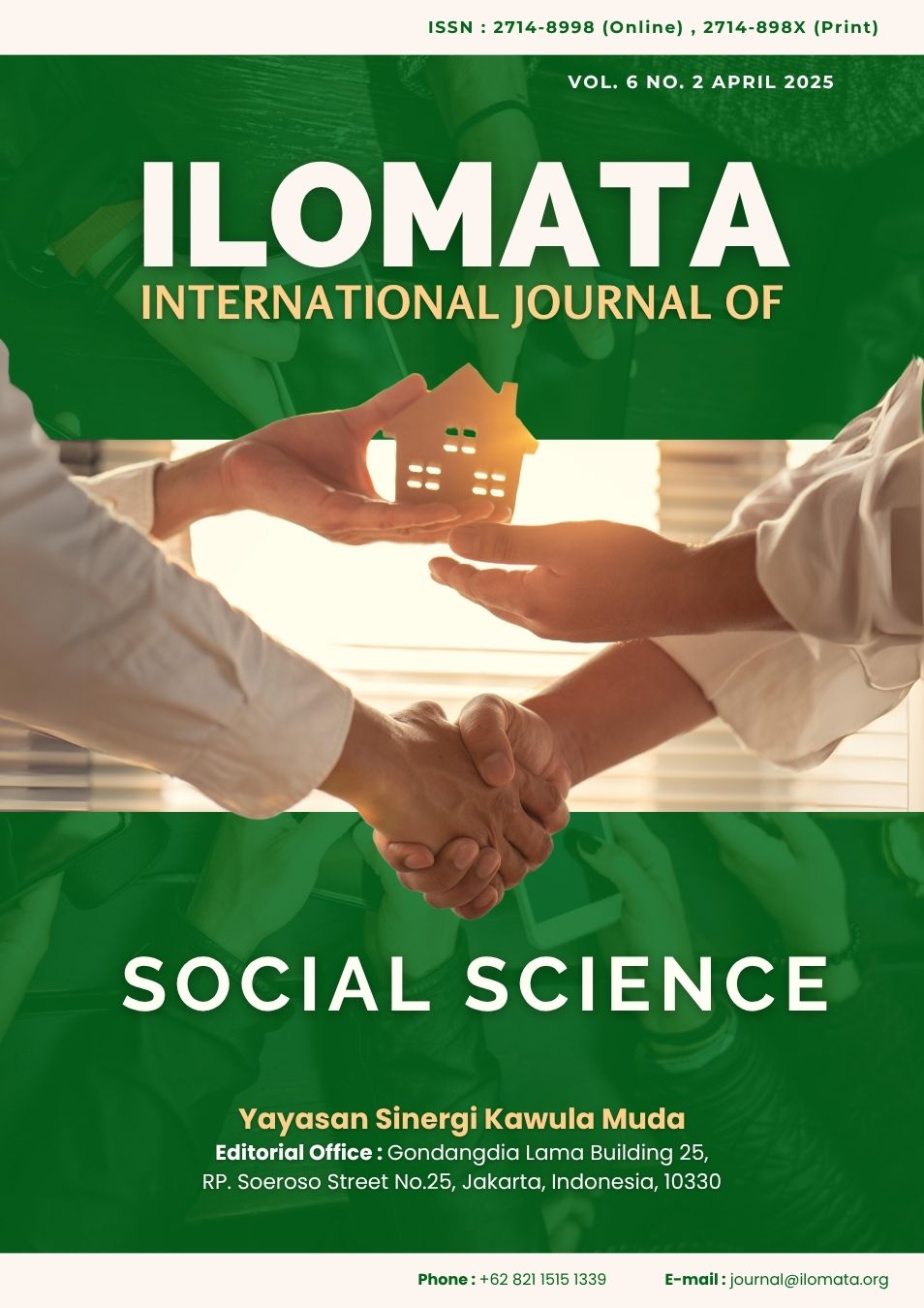Main Article Content
Abstract
Market value estimated by property valuers is essential as it is used for various purposes both in public and private sectors. Hence, the accuracy of market value estimate is of paramount importance. However, valuation involves subjectivity, so it is bound to suffer from errors. This study is aimed at studying such errors. For this purpose, this study uses a market price of a parcel of land in the southern part of Jakarta. This particular area was chosen due to its significant number of property transactions compared to other regions in Jakarta. Government valuers at the Ministry of Finance were invited to provide their value estimate of that property. They were only allowed to use a pre-made worksheet provided by the researchers. This study shows the estimated market value is around 16.9% of the market price. Differences in rank, experience, or neighborhood knowledge have no significant relation to the accuracy of market value estimate. Most participants can demonstrate that their market value estimates are relatively similar, showing low variation between valuers.
Keywords
Article Details

This work is licensed under a Creative Commons Attribution 4.0 International License.
References
- Abidoye, R. B., & Chan, A. P. C. (2018). Improving Property Valuation Accuracy: A Comparison of Hedonic Pricing Model and Artificial Neural Network. Pacific Rim Property Research Journal, 24(1), 71-83. https://doi.org/10.1080/14445921.2018.1436306
- Abidoye, R. B., Huang, W., Amidu, A.-R., & Javad, A. A. (2021). An Updated Survey of Factors Influencing Property Valuation Accuracy in Australia. Property Management, 39(3), 343-361. https://doi.org/10.1108/PM-02-2020-0014
- Adegoke, O. J. (2016). Effects of Valuation Variance and Inaccuracy on Nigerian Commercial Property Market. Journal of Property Investment & Finance, 34(3), 276-292. https://doi.org/10.1108/JPIF-08-2014-0056
- Adilieme, C. M., Abidoye, R. B., & Lee, C. L. (2024). Examining the Valuation Process in a Low Transparent Property Market – Perspectives of Property Valuers in Nigeria. Property Management, ahead-of-print. https://doi.org/10.1108/PM-04-2024-0031
- Ajibola, M., & Oletubo, A. (2011). Assessment of Accuracy of Valuation in the Property Market in Lagos Metropolis. Global Journal of Engineering and Technology, 4(1), 45-51. http://eprints.covenantuniversity.edu.ng/id/eprint/3703
- Ali, H. M., Ling, G. H. T., Sipan, I., Omar, M., & Achu, K. (2020). Effects of Behavioural Uncertainties in Property Valuation. International Journal of Built Environment and Sustainability, 7(3), 69-79. https://dx.doi.org/10.11113/ijbes.v7.n3.557
- Amidu, A.-R., Levy, D., & Bolomope, M. (2021). Conceptualising Valuation Quality in Practice: A Valuer Perspective. Journal of Property Research, 38(3), 213-237. https://doi.org/10.1080/09599916.2021.1930108
- Amidu, A.-R., Levy, D., Bolomope, M., & Liman, H. S. (2024). Barriers in Achieving Quality Valuations: the New Zealand Perspective. Journal of Property Investment & Finance, ahead-of-print(ahead-of-print). https://doi.org/10.1108/JPIF-02-2024-0014
- Amidu, A. R., Boyd, D., & Agboola, A. O. (2019). The Role of Knowledge in Valuation Practice: Expert Valuers’ Perceptions. Journal of Property Investment & Finance, 37(6), 524-540. https://doi.org/10.1108/JPIF-11-2018-0089
- Andrade, C. (2020). The Limitations of Online Surveys. Indian journal of Psychological Medicine, 42(6), 575-576. http://dx.doi.org/10.1177/0253717620957496
- Atilola, M. I., Ismail, A., Achu, K., & Ariffian, B. (2019). An Evaluation of Factors Causing Variance in Property Assessment. Planning Malaysia, 17(1), 82-93. https://doi.org/10.21837/pmjournal.v17.i9.588
- Box, G. E. P. (1976). Science and Statistics. Journal of the American Statistical Association, 71(356), 791-799. https://doi.org/10.1080/01621459.1976.10480949
- Cannon, S. E., & Cole, R. A. (2011). How Accurate Are Commercial Real Estate Appraisals? Evidence From 25 Years of NCREIF Sales Data. The Journal of Portfolio Management, 37(5), 68-88. http://dx.doi.org/10.2139/ssrn.1824807
- Cheloti, I., & Mooya, M. (2021). Valuation Problems in Developing Countries: A New Perspective. Land, 10(12), 1352. http://dx.doi.org/10.3390/land10121352
- Cheloti, I., & Mooya, M. (2023). Property Valuation Problems and Market Context – Evidence from Kenya. Journal of Property Research, 40(1), 76-100. https://doi.org/10.1080/09599916.2022.2119879
- Chen, F.-Y., & Mak, M. Y. (2024). Client Influence or the Valuer's Behavior? An Empirical Study of Listed Companies' Valuation in Taiwan. Journal of Property Investment & Finance, 42(4), 348-364. https://doi.org/10.1108/JPIF-10-2022-0069
- Crosby, N. (2000). Valuation Accuracy, Variation and Bias in the Context of Standards and Expectations. Journal of Property Investment & Finance, 18(2), 130-161. https://doi.org/10.1108/14635780010324240
- French, N., & Gabrielli, L. (2004). The Uncertainty of Valuation. Journal of Property Investment & Finance, 22(6), 484-500. https://doi.org/doi:10.1108/14635780410569470
- Geerts, M., vanden Broucke, S., & De Weerdt, J. (2023). A Survey of Methods and Input Data Types for House Price Prediction. ISPRS International Journal of Geo-Information, 12(5), 200. https://www.mdpi.com/2220-9964/12/5/200
- Gorard, S. (2013). The Possible Advantages of the Mean Absolute Deviation 'Effect' Size. Social research update., 65(Winter 2013), 1-4. https://durham-repository.worktribe.com/output/1473101/the-possible-advantages-of-the-mean-absolute-deviation-effect-size
- Hariharan GG, Walvekar, G., & Kakka, V. (2021). Private Real Estate: Valuation and Sale Price Comparison 2020. https://www.msci.com/documents/10199/939c40ef-1ad7-771e-2d9f-51cb3d281675
- Kahneman, D., Sibony, O., & Sunstein, C. R. (2021). Noise: A Flaw in Human Judgment (1st ed.). Williams Collins.
- Kok, N., Koponen, E.-L., & Martínez-Barbosa, C. A. (2017). Big Data in Real Estate? From Manual Appraisal to Automated Valuation. The Journal of Portfolio Management, 43(6), 202-211. https://doi.org/https://doi.org/10.3905/jpm.2017.43.6.202
- Liman, H. S., Amidu, A.-R., & Levy, D. (2024). Approaches to Improving Valuation Decision-making: A review of the Literature. Journal of Property Investment and Finance. http://dx.doi.org/10.1108/JPIF-01-2024-0011
- Mohammad, N. E., Ali, H. M., & Jasimin, T. H. (2018). Valuer's Behavioural Uncertainties in Property Valuation Decision Making. Planning Malaysia, 16. https://doi.org/https://doi.org/10.21837/pm.v16i5.428
- Nasir, A. (2015). Valuation Variance of Commercial Properties in Malaysia. Pacific Rim Property Research Journal, 12(3), 272-282. https://doi.org/10.1080/14445921.2006.11104210
- Pagourtzi, E., Assimakopoulos, V., Hatzichristos, T., & French, N. (2003). Real Estate Appraisal: A Review of Valuation Methods. Journal of Property Investment & Finance, 21(4), 383-401. https://doi.org/doi:10.1108/14635780310483656
- Parker, D. (1999). A Note on Valuation Accuracy: An Australian Case Study. Journal of Property Investment & Finance, 17(4), 401-411. https://doi.org/10.1108/14635789910282807
- Sabrina, H. (2021). The Online Questionnaire: General Guidelines. Journal of Kefaya for Language and Literature 1(1). https://asjp.cerist.dz/en/downArticle/919/1/1/238092
- Setijono, D. (2025). Behavioural Shortcomings to Avoid in Asset Aaluation Using Comparable Method – Insights from A Survey Experiment. Journal of Property Investment & Finance, ahead-of-print(ahead-of-print). https://doi.org/10.1108/JPIF-08-2024-0099
- Wardropper, C. B., Dayer, A. A., Goebel, M. S., & Martin, V. Y. (2021). Conducting Conservation Social Science Surveys Online. Conservation Biology, 35(5), 1650-1658. https://doi.org/https://doi.org/10.1111/cobi.13747

